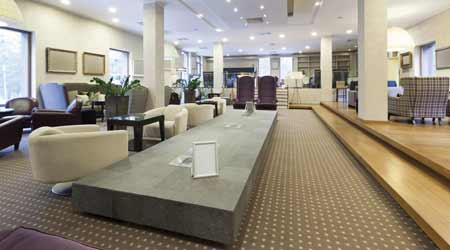Lighting controls can reduce lighting energy use in institutional and commercial facilities by up to 47 percent, according to an article from Facility Maintenance Decisions magazine on the FacilitiesNet website.
The ideal time to install controls in existing buildings is during an upgrade to LED technology. The challenge for maintenance and engineering managers is to develop plans and select products in ways that ensure the project delivers results in terms of savings and performance.
The advent of LED technology and digitalization of lighting control has led to new control capabilities — the ability to tune a light source’s color output, program the responsiveness and behavior of the control system, collect data on energy and space use, and monitor itself for problems.
Most LED luminaires incorporate dimming without the cost premium associated with traditional fluorescent lighting, providing flexibility as a standard feature or standard option. This flexibility can make an important difference in terms of energy savings, as well as mood and visual comfort.
In short, lighting controls facilitate good lighting and save energy by producing the right amount and quality of light where and when needed, and they give managers information about the way lighting is used.

 Grounding Healthcare Spaces in Hospitality Principles
Grounding Healthcare Spaces in Hospitality Principles UC Davis Health Selects Rudolph and Sletten for Central Utility Plant Expansion
UC Davis Health Selects Rudolph and Sletten for Central Utility Plant Expansion Cape Cod Healthcare Opens Upper 2 Floors of Edwin Barbey Patient Care Pavilion
Cape Cod Healthcare Opens Upper 2 Floors of Edwin Barbey Patient Care Pavilion Building Sustainable Healthcare for an Aging Population
Building Sustainable Healthcare for an Aging Population Froedtert ThedaCare Announces Opening of ThedaCare Medical Center-Oshkosh
Froedtert ThedaCare Announces Opening of ThedaCare Medical Center-Oshkosh